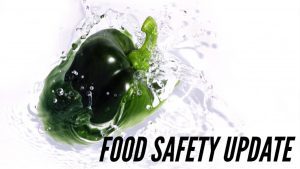As anyone in the perishables business knows, the facets of food safety are vast and varied—and so too are the solutions suppliers use to not only keep produce fresh but maintain stringent safety procedures.

For many growers, monitoring wash water is a key part of preventing contamination from the field and thwarting its spread to other parts of supply chain.
Two years ago, E. Miedema & Sons stepped up its wash water protocols. It began using oxidation reduction potential (or ORP) sensors, which measure the strength of one substance to reduce oxidation in another in wash water solutions for its sweet corn production, along with an injecting system to maintain active ingredient levels.
Common sanitizers use chlorine bleach (sodium hypochlorite) and peracetic acid (also known as peroxyacetic acid or PAA). The ORP meter tells the injector when to infuse more or less of these active ingredients for the proper balance, depending on the system.
Miedema said the systems “haven’t exactly been trouble-free” and have their limitations.
“Corn can be a very dirty product, so the probes don’t always read properly and need regular attention,” he said, but the protocols do add an extra layer of protection. Both systems cost the company about $3,000 and use from $6,000 to $8,000 in chlorine and peracetic acid during the season, he said.
Even though injectors and monitors require maintenance, Don Stoeckel, PhD, regional extension associate for the Produce Safety Alliance in the Midwest, expects more producers to use them in the near future, though cost can be a deterrent.
“The farms that can afford them tend to use them because they reduce labor and the probability of error,” he points out. “Other farms choose to monitor by hand if they’re using sanitizer in their wash water.”
This is an excerpt from the most recent Produce Blueprints quarterly journal. Click here to read the full article.


